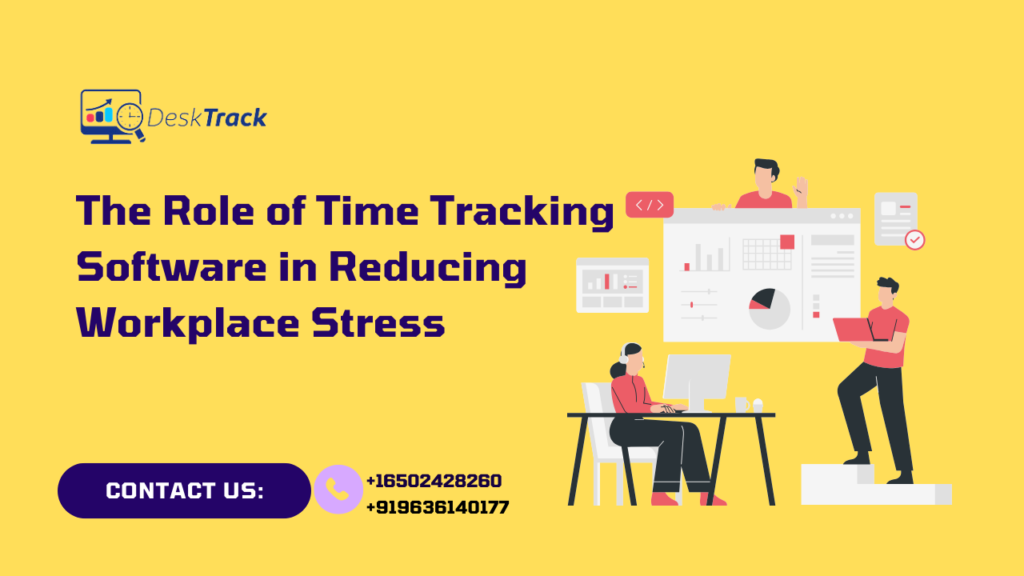
Work stress is inevitable, which is one of the major reasons for any employee calling it quits. However, we can reduce it to manageable levels if we have the right tools and technology. One such software is time tracking software, which provides a plethora of features and functionalities for your employees to easily manage work and get through the day without burnout. So in today’s post, we will provide you with an orientation to time tracking software and see how implementing it can reduce workplace stress. With that being said, let’s get started retaining more employees.
An Overview of Time Tracking Software
Simply put, time tracking software tracks work hours. These are advanced function and feature-rich tools and applications, which are available as:
- Web applications
- Smartphone apps
- Desktop software
- Browser Extensions
- Wearable apps
Time tracking software solutions provide many features to help employees improve their work-time utilization including:
- Timesheets
- Automated time tracking
- Real-time tracking
- Time blocks
- Multiple task timers
- Integrations
- User-friendly interface
- Synchronized work-time utilization analytics and reporting
- Employee time scheduling
However, how can these features help reduce or even eliminate workplace stress?
Utilizing Time Tracking Software Reduces Stress: Here’s How?
Utilizing all the features and functionalities of time tracker software and tools not only ensures that your employees are more focused and efficient but also ensures that they work stress-free. It not only reduces workplace stress but can also reduce your daily duty stress if you implement it in your personal life. Here’s how it all works.
1. Task Prioritization
Work-time utilization reports from time tracking software ensure that you properly prioritize tasks based on:
- Their complexity
- The time it takes to complete them
- Task reliability (tasks that are related to each other, for instance, you can’t make a website live without proper content so the content writer and web designer must work simultaneously)
- Task status
- Task deadline
Accordingly, you can allot time slots and timelines to these tasks, which will make work management simple for your employees and there will be reduced or no stress.
2. Workload Balancing
Balancing the workloads of employees to be optimal is the key aspect of reducing and/or eliminating workplace stress. Time tracking software provides you with work-time utilization and activity completion hours data, which lets you conclude how many employees are underutilized and how many of them are spent too much. Doing so will let you even out workloads for stress-free working.
3. No Micromanagement
Micromanagement leads to emotional stress, which is too much to handle for anyone. Fortunately, when you are utilizing time tracking software, you don’t need to micromanage every individual. Because:
- Time tracking software is doing the job of helping employees manage their time.
- Due to real-time work hours data, there is no need to come out from your office to check individual employee’s work now and then.
This ensures there is no need for micromanagement and your employees work stress-free.
4. Remote Work Flexibility Support
Remote work sure has many benefits including flexible schedules and the comfort of working from anywhere. However, since the place where they work and the place where they relax are the same, it can lead to too much stress coping with other pressures while managing work.
Time tracking software provides features to set fixed remote team schedules, which let them keep personal and work-life separate. Overall, that’s reduced stress for your remote teams.
5. Identifies Stress-Indusive Work
Work-time utilization reports from your time tracking software let you easily evaluate the efficiency levels of your employees. Too much gap in this information can be a clear indicator of stress-inducive work, which is dangerous for your employees’ mental health.
An expert tip here would be to brainstorm this with your employees to verify stress levels. That way you can easily adjust workloads to reduce and/or eliminate stress.
6. Prevents Burnout
Utilizing time tracking software leads to employee satisfaction. It is because they always complete work on and/or before time, leaving enough room to rejuvenate. Plus, it can also be set to allow work breaks to refresh the mind. Also, since time tracking software and tools improve time management, desktop activity time tracking, any task, regardless of its complexity will seem simple.
7. Fosters Trust & Transparency
When there is no trust and clarity between you and your employees, there will be anything but stress-free work. Time tracking software lets you give authority and empowerment to your employees, which strengthens the trust and transparency between you and your employees.
Conclusion
With that, we wrap up our post for today’s title, The Role of Time Tracking Software in Reducing Workplace Stress. As a final word, we would like to stress that workplace stress due to any reason is one of the primary reasons why employees quit organizations earlier than their bond period. Fortunately, employee time tracking and the tools for it exist. Such tools and software help employees cope with daily work and easily manage workloads for a happy work-life balance. Such software solutions ensure that employees neither overwork nor underwork, which is the best for your business.

Author Bio: Lakshya Pareek is the SEO Manager and a content writer at Aryavrat Infotech Pvt. Ltd. He specializes in driving organic growth through strategic SEO techniques and creating engaging content. With a keen focus on improving website visibility and search engine rankings, Lakshya ensures that the company’s digital presence remains both competitive and impactful.